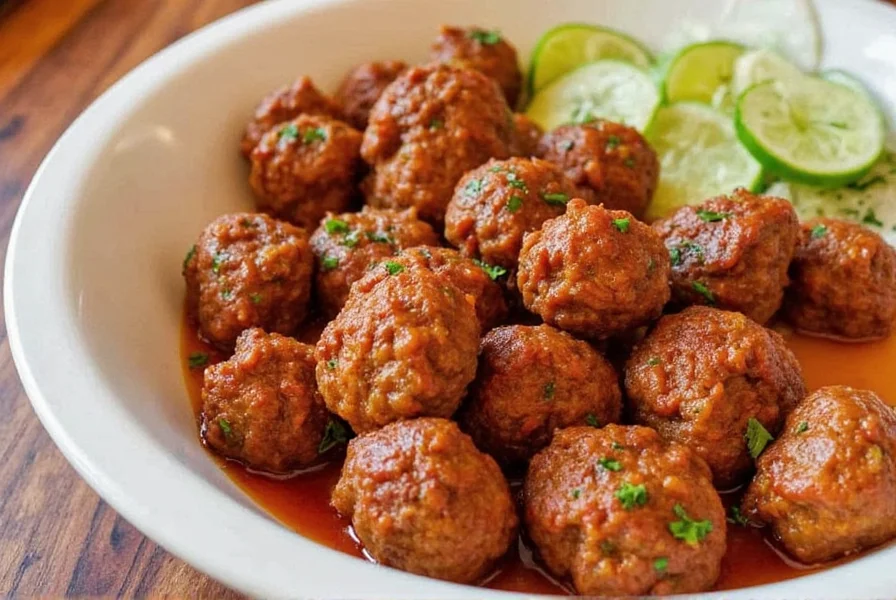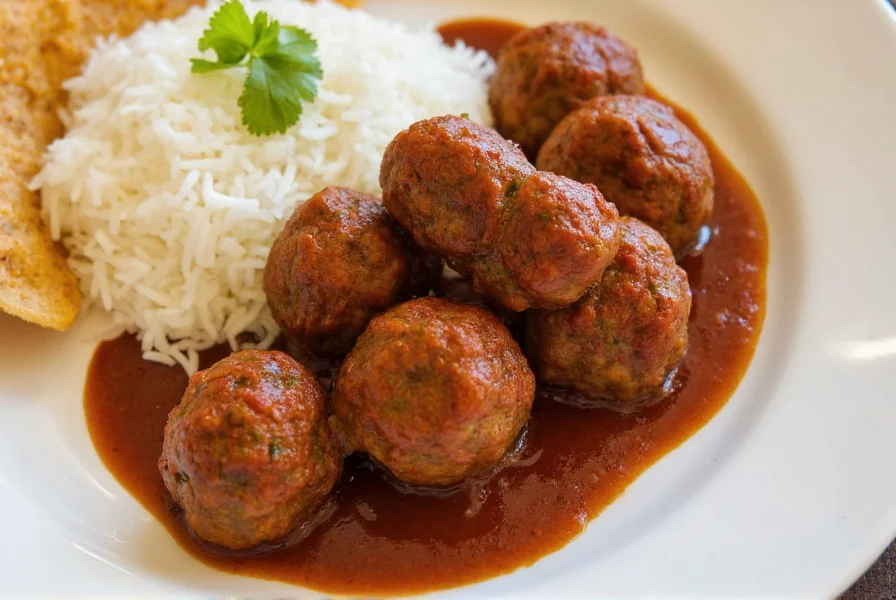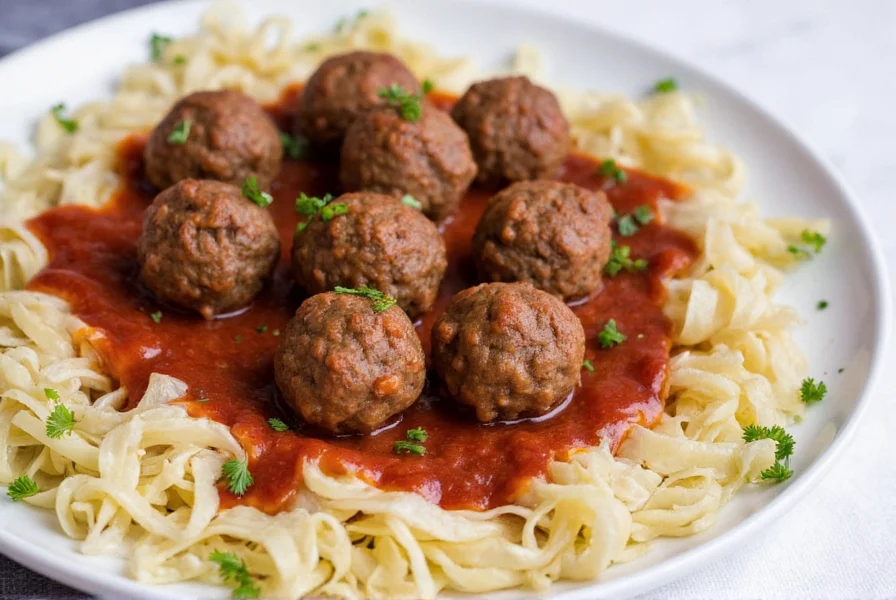The authentic köfte recipe combines 500g ground lamb or beef, 1 finely grated onion, 2 cloves minced garlic, 1 egg, 1/4 cup breadcrumbs, 1 tsp each of cumin, paprika, and mint, plus salt and pepper. Mix gently, form into finger-shaped patties, and grill for 8-10 minutes until golden brown and cooked through. Serve with yogurt sauce and fresh vegetables for the traditional Turkish experience.
Nothing captures the essence of Turkish street food quite like perfectly seasoned köfte. These flavorful meatballs have been delighting palates across the Middle East and Balkans for centuries, with each region adding its distinctive touch. Whether you're hosting a summer barbecue or craving authentic Turkish comfort food, mastering this traditional köfte recipe will transport your taste buds straight to the bustling markets of Istanbul.
What Exactly Is Köfte?
Köfte (pronounced kur-FTAY) represents one of Turkey's most beloved culinary traditions. Unlike Western meatballs, authentic Turkish köfte typically features elongated finger-shaped patties made from finely ground meat mixed with aromatic herbs and spices. The word "köfte" actually derives from the Persian "kufta," meaning "to beat" or "to grind," reflecting the traditional preparation method where meat was pounded to achieve the perfect texture.
While variations exist throughout Turkey—from the spicy Adana köfte of the south to the delicate İçli köfte with bulgur shells—the recipe we're sharing today represents the classic home-style version enjoyed across Turkish households. This easy köfte recipe balances tradition with approachability, making it perfect for both novice cooks and experienced grill masters.
Essential Ingredients for Authentic Flavor
The magic of köfte lies in its simplicity. Unlike complex dishes requiring dozens of ingredients, authentic köfte shines through quality components and proper technique. Here's what you'll need for the perfect batch:
| Ingredient | Quantity | Why It Matters |
|---|---|---|
| Ground lamb or beef (80/20 fat ratio) | 500g (1.1 lbs) | Fat content ensures juicy, flavorful köfte that doesn't dry out during cooking |
| Yellow onion, finely grated | 1 medium | Provides moisture and subtle sweetness; grating ensures even distribution |
| Fresh garlic, minced | 2 cloves | Essential aromatic that defines Turkish köfte flavor profile |
| Fresh parsley, finely chopped | 1/4 cup | Adds brightness and balances rich meat flavors |
| Egg | 1 | Binds ingredients without making köfte dense |
| Breadcrumbs | 1/4 cup | Absorbs excess moisture while maintaining tender texture |
| Ground cumin | 1 tsp | Signature spice that gives köfte its distinctive earthy note |
| Sweet paprika | 1 tsp | Adds color and subtle sweetness without heat |
| Dried mint | 1 tsp | Traditional Turkish ingredient that brightens the flavor |
| Salt and freshly ground black pepper | To taste | Essential for flavor enhancement |
Step-by-Step Preparation Guide
Creating perfect köfte requires attention to technique as much as ingredients. Follow these steps for restaurant-quality results every time:
- Prepare the onion: Finely grate one medium onion using a box grater, then squeeze out excess liquid using your hands or a clean kitchen towel. This prevents soggy köfte while retaining flavor.
- Mix ingredients: In a large bowl, combine the ground meat, grated onion, minced garlic, chopped parsley, egg, breadcrumbs, and all spices. Use your hands to mix gently—overmixing will make the köfte dense.
- Rest the mixture: Cover and refrigerate for at least 30 minutes (or up to 2 hours). This crucial step allows flavors to meld and makes shaping easier.
- Shape the köfte: Divide mixture into 8-10 portions. Roll each between your palms into a sausage shape approximately 4 inches long and 1 inch thick. Create a slight indentation along the top with your thumb for traditional presentation.
- Cook properly: Grill over medium heat for 8-10 minutes, turning occasionally, until golden brown on all sides and internal temperature reaches 160°F (71°C). Alternatively, pan-fry in 1-2 tablespoons of olive oil over medium heat.

Pro Tips for Perfect Köfte Every Time
Mastering this traditional Turkish köfte recipe requires understanding some key techniques that separate good köfte from exceptional köfte:
- Keep everything cold: Chill your mixing bowl and utensils before starting. Cold ingredients prevent the fat from melting prematurely, ensuring juicy köfte.
- Don't overwork the meat: Mix just until ingredients are incorporated. Excessive handling makes köfte tough.
- Test seasoning first: Fry a small patty to check seasoning before shaping all köfte. Adjust salt and spices as needed.
- Avoid pressing while cooking: Resist the urge to press down on köfte while grilling—this squeezes out precious juices.
- Rest before serving: Let köfte rest for 5 minutes after cooking to allow juices to redistribute.
Regional Variations to Explore
Once you've mastered the basic köfte recipe, experiment with these authentic regional variations:
- Adana Köfte: Add extra red pepper flakes and minced red peppers for this spicy southern Turkish version, traditionally served on flatbread with grilled vegetables.
- İzmir Köfte: Incorporate grated carrots and a touch of allspice for this Aegean coastal variation, often served with tomato-based sauce.
- Şiş Köfte: Skewer small köfte portions on metal skewers for even cooking and attractive presentation.
- Vegan Köfte: Substitute meat with cooked lentils, walnuts, and bulgur for a plant-based alternative that maintains traditional flavors.
Serving Suggestions and Accompaniments
Authentic köfte deserves equally thoughtful accompaniments. Here's how to create a complete Turkish dining experience:
- Classic yogurt sauce: Mix 1 cup plain yogurt with 1 minced garlic clove, 1 tbsp lemon juice, and a pinch of salt. The cool tang perfectly balances köfte's richness.
- Fresh vegetable platter: Serve with sliced tomatoes, cucumbers, red onions, and green peppers for refreshing contrast.
- Pide bread: Warm Turkish flatbread is ideal for wrapping köfte and vegetables.
- Sumac onions: Thinly slice red onions and toss with sumac, lemon juice, and olive oil for a traditional Turkish side.
- Rice pilaf: A simple buttered rice pilaf makes a satisfying base for köfte.

Storage and Reheating Instructions
While köfte tastes best fresh off the grill, you can store leftovers properly for future enjoyment:
- Refrigeration: Store cooled köfte in an airtight container for up to 3 days.
- Freezing: Freeze uncooked köfte portions on a baking sheet, then transfer to freezer bags for up to 3 months. Cook directly from frozen, adding 2-3 minutes to cooking time.
- Reheating: Warm in a 350°F (175°C) oven for 10-15 minutes until heated through. Avoid microwaving, which makes köfte rubbery.
- Repurposing: Crumble leftover köfte into salads, wraps, or pasta dishes for added protein and flavor.
Why This Köfte Recipe Works
This authentic köfte recipe succeeds because it honors traditional Turkish cooking principles while accommodating home kitchen realities. The balanced spice profile—neither too mild nor overwhelmingly spicy—captures the essence of Turkish street food. The careful attention to meat-to-fat ratio ensures juicy results without greasiness, while the resting period develops complex flavors that instant recipes miss.
Unlike many simplified köfte recipes found online, this version maintains the delicate texture that defines authentic Turkish köfte. The finger-shaped patties maximize surface area for beautiful caramelization while maintaining a tender interior. Whether you're new to Turkish cuisine or looking to refine your technique, this köfte recipe delivers consistent, delicious results that will become a regular in your cooking repertoire.
Can I make köfte with chicken or turkey instead of lamb or beef?
Yes, you can substitute ground chicken or turkey, but you'll need to adjust the recipe. Poultry has less fat than lamb or beef, so add 2 tablespoons of olive oil or grated zucchini to maintain moisture. Increase the spices slightly as poultry has milder flavor. Cook until internal temperature reaches 165°F (74°C) for food safety.
Why do my köfte keep falling apart during cooking?
Köfte falling apart usually indicates one of three issues: overmixing the meat (which develops tough proteins), insufficient binder (try increasing breadcrumbs to 1/3 cup), or cooking at too high heat. Always chill the mixture before shaping, handle gently when forming patties, and cook over medium heat rather than high heat for best results.
What's the difference between köfte and regular meatballs?
Traditional Turkish köfte differs from Italian or Swedish meatballs in several ways: köfte is typically shaped into elongated finger-like forms rather than perfect spheres, uses different spice profiles (cumin and mint rather than oregano), and often contains less breadcrumb filler. Köfte also traditionally features a higher meat-to-binder ratio, resulting in a more intense meat flavor.
Can I bake köfte instead of grilling or pan-frying?
Absolutely. Preheat your oven to 400°F (200°C) and place shaped köfte on a parchment-lined baking sheet. Lightly brush with olive oil and bake for 15-18 minutes, turning once halfway through, until golden brown and cooked through. Baking produces slightly less caramelized exterior but is a great hands-off option, especially when cooking large batches.











 浙公网安备
33010002000092号
浙公网安备
33010002000092号 浙B2-20120091-4
浙B2-20120091-4